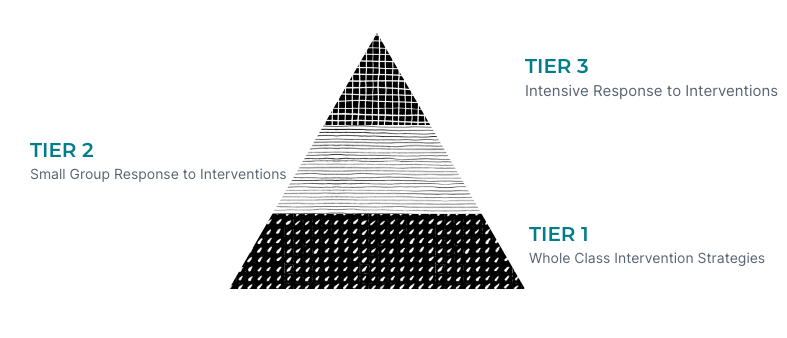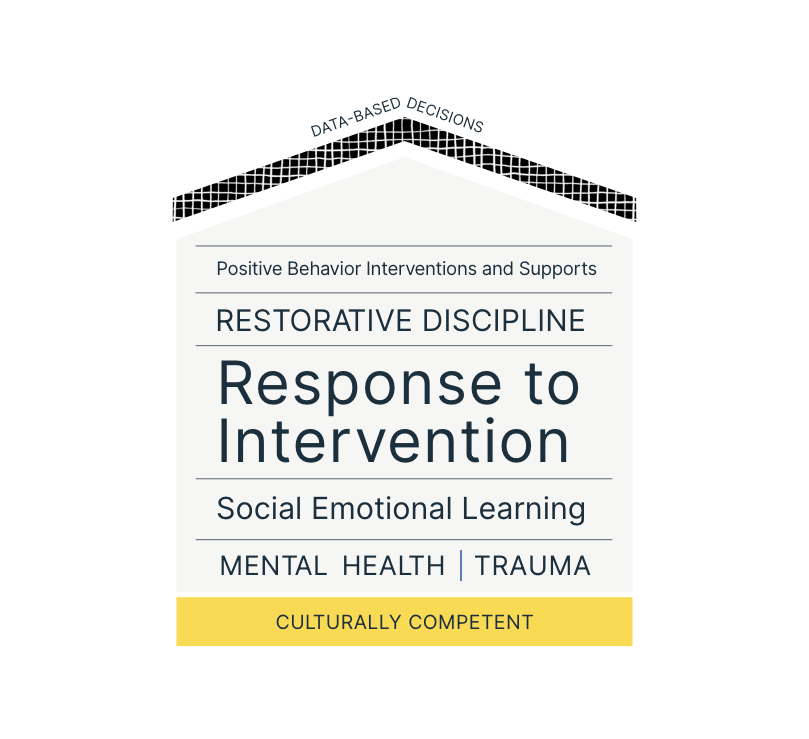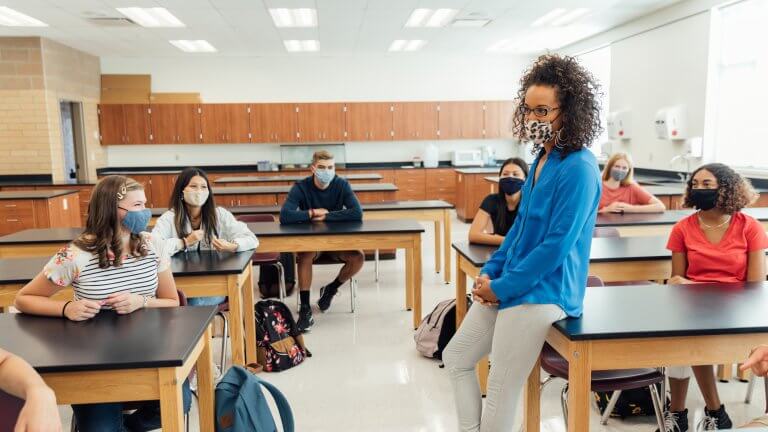Response to Intervention, otherwise known as RTI, is a critical and multi-tier way of identifying and supporting students with behavior or learning needs. As students struggle with learning a lesson or a subject, they’re provided interventions that increase in levels of intensity to boost their learning and help them succeed in the classroom.
These interventions are offered by classroom teachers, special education teachers, or a variety of different specialists working. Students of all types receive RTI support, with teachers monitoring test scores and other measures to pick the research designed and proven instructions necessary to increase student success.
Response to Intervention is used to make decisions in both general education and special education classrooms and creates an integrated system of instruction that’s guided by individual student data. Great RTI programs include access to high-quality research-based classroom instruction, continued student assessment like formative assessment and progress monitoring, implementation of a tiered instructional model, and parent involvement.
Response to Intervention is also a process that’s used across grade levels and subject areas. It’s not confined to one classroom but helps get a bigger picture view of each students’ performance academically.
A three tiered Response to Intervention framework

The Response to Intervention framework looks like a pyramid: with Tier one interventions appearing at the bottom and Tier three interventions appearing at the top. These services are provided by classroom teachers, staff members, and specialists. They’re all designed to help students succeed in the classroom by providing them the appropriate level of response and instruction.
Tier 1: Whole Class Intervention Strategies
Tier 1 strategies make up the base of the Response to Intervention framework. In general education classrooms, teachers measure everyone’s skills through universal screening. This type of screening allows teachers to split students off into small groups or other research-based methods to give them as much individualized support as possible.
These are often called Whole Class or Core Group interventions. During this stage of the RtI process, your campus RtI team monitors all of the students’ progress to help them uncover which students might benefit from Tier 2 or Tier 3 supports. In a lot of schools, the majority of students benefit from Tier 1 interventions and hit their target grade-level expectations. Students that don’t benefit, are pushed up to Tier 2 for additional supports.
Examples of effective Tier 1 strategies could be:
- Having students state the goal of the day or lesson.
- Using visuals and models to represent concepts.
- Providing feedback and reinforcement.
- Using graphic organizers.
- Using Universal Design for Learning.
- Articulating learning objectives.
Tier 2: Small Group Response to Interventions
Students who still struggle after Tier 1 strategies are pushed into Tier 2 interventions. These provide more targeted support for students and are offered in addition to the normal classroom instruction they receive, not in place of it.
Often called, small group or targeted interventions, Tier 2 strategies look different than whole group strategies and they might take place regularly throughout the week so students don’t miss out on parts of core instruction.
During these additional instructional periods, students receive more intensive instruction from a variety of research backed strategies. This is because students who have made it into Tier 2 are considered at a higher risk of not meeting grade expectations.
Examples of Tier 2 strategies might include:
- Breaking up information into steps or parts for students.
- Slowing the pace of learning down for students.
- Building in more opportunities for practice.
- Frequently monitoring progress and reteaching core-concepts.
Tier 3: Intensive Response to Interventions
If a student is still struggling after Tier 1 and Tier 2 interventions, they’ll move to the top of the pyramid and start receiving more intensive interventions. These are, by design, much more individualized and tailored to a smaller percentage of the original class.
Teachers and educational specialists work together to create custom plans for a students’ individualized needs. They might be provided one-on-one instruction during the day or they might work in very small groups to target one or two learning objectives. While not all students receiving Tier 3 supports are classified as Special Education students, they might also work with special education teachers or other students in special education classrooms to work on the same or very similar skillsets. Students receiving Tier 3 support might also get evaluated for special education services, which can help them receive even more additional targeted instructional support.
Tier 3 interventions are designed to take place in addition to all other types of instruction. This means that students, generally speaking, spend most of their days in a general education classroom and might move somewhere else periodically to receive their individualized support. Sometimes this level of individualized support is also offered in the classroom.
RtI as a continual process
Response to intervention is, in practice, a vital part of a school or districts’ special education plan. Many students use the tiered levels of RtI to intervene before referring a student to receive special education services. This helps connect students with the services they need right now.
Since Response to intervention is offered as additional supports it helps students continue to receive instructional support within their current classrooms. Just the same, because it’s a continual and active process, teachers provide their students with direct support the moment they start falling behind other students. The information collected during the RtI process is used by all types of educators to see what what strategies have been tried and what progress, if any, has been made.
Response to Intervention and Multi-Tiered Systems of Support
In addition to RtI, you’ve likely heard the phrase Multi-Tiered Systems of Support or MTSS used in your school or district. Schools and districts across the country use the MTSS framework to support more than just their students’ academic growth.
In a nutshell, MTSS means integrating academic support, which might often be provided by response to intervention, with other social, emotional, and cultural goals. Response to Integration is often paired with initiatives like Positive Behavior Interventions and Supports (PBIS), restorative practices like restorative circles, social-emotional learning opportunities, and a healthy focus on mental health and trauma support.

At our center, we focus on an MTSS+ approach to supporting student development. This means that tiered interventions happen in all areas of MTSS, not just academics like reading and math. We think of it a lot like a house. Our MTSS practices are focused on culturally competent approaches to student life, and within the house, PBIS, RtI, SEL, Mental Health, trauma, and restorative practices all exist together. Making up the roof of that house are strong data-based decisions. In this integrated system, we’re addressing academic, behavior, SEL, and trauma-informed instruction to help with the whole health and success of our students.
Mary Black worked with teachers and principals in creative and strategic planning for curriculum and instruction at schools with diverse student populations. She has years of leadership experience in secondary schools, beginning her educational career as a high school English teacher in an urban high school, also serving as a high school principal.


I don’t understand why every student, even an honor’s student who is excelling, is considered in Tier One. Why is every single student in a school already on Tier One? Isn’t that just “school?”
Hi, Shawn. Thanks for commenting. Here is some additional information on Tier 1.
RTI: A Practitioner’s Guide to Implementing Response to Intervention
Sage Publications
Tier 1 Explained:
Tier 1 is particularly important for two reasons. First, it represents the first gate in a system designed to accommodate the diverse learning needs of all students. Thus, Tier 1 provides the foundation for instruction on which all supplementary interventions are formulated. Second, since Tier 1 focuses on all students, it is the most cost-effective means of addressing the population of learners. The subsequent tiers address the needs of fewer learners with additional resources. An important benefit of Tier 1 instruction is that when used in conjunction with universal screening measures, students who require more intense support are easily identified. Universal screening measures assess students’ academic or behavioral skills or abilities that are predictive of learning and achievement.
Because Tier 1 occurs in the general classroom, it is tempting to conclude that it is already being implemented. However, Tier 1 instruction is one level within a larger, integrated system of instruction, intervention, and assessment that promotes higher student achievement.
Additionally, Tier 1 promotes the adoption of research-based practices, which for some schools may require consideration of new instructional programs, evaluation of existing instruction, and reorganization of school resources.
If you have additional questions, please contact Joe Green, Content Services Coordinator.